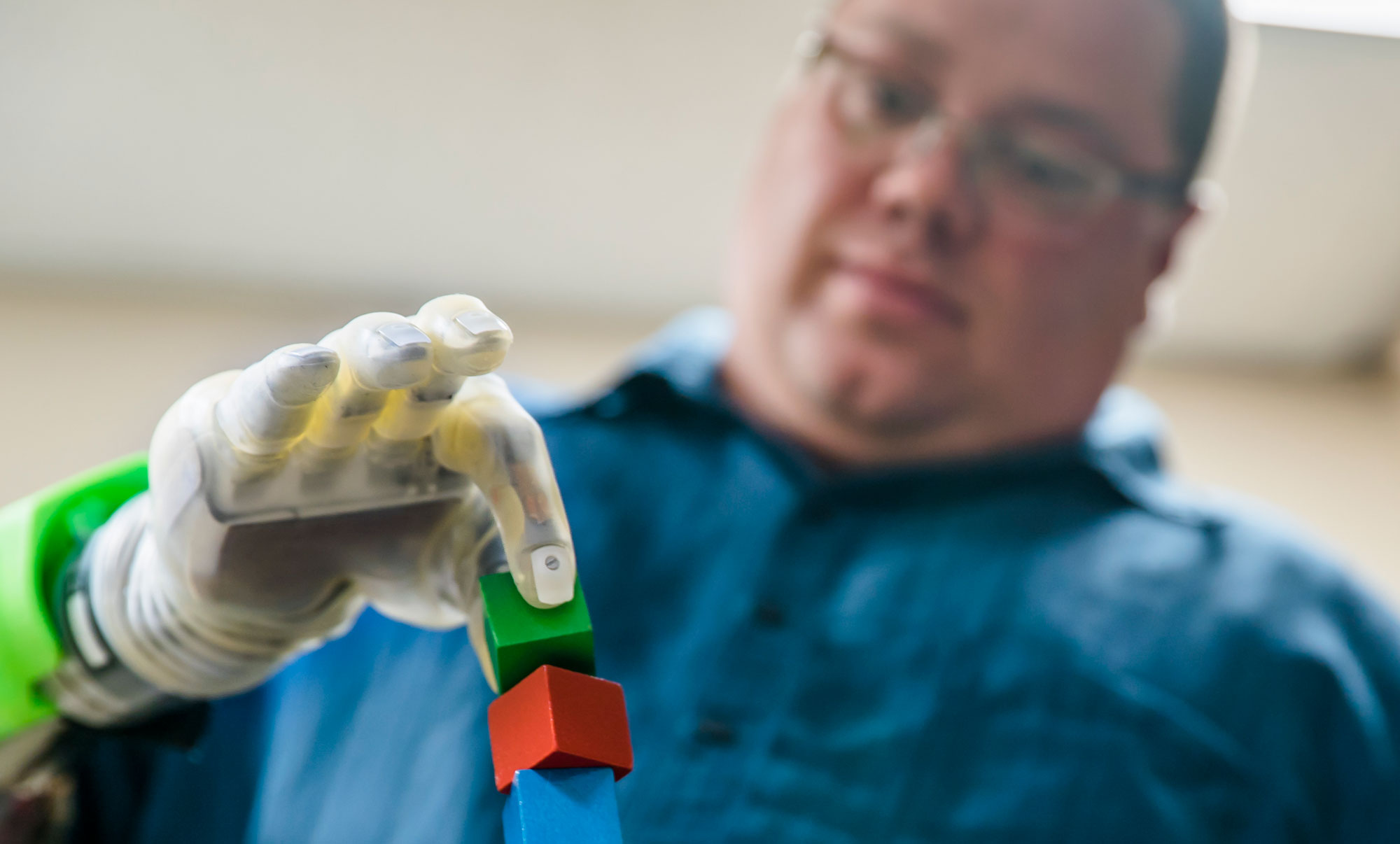An implant uses machine learning to give amputees control over prosthetic hands

Researchers have been working to make mind-controlled prosthetics a reality for at least a decade. In theory, an artificial hand that amputees could control with their mind could restore their ability to carry out all sorts of daily tasks, and dramatically improve their standard of living.
However, until now scientists have faced a major barrier: they haven’t been able to access nerve signals that are strong or stable enough to send to the bionic limb. Although it’s possible to get this sort of signal using a brain-machine interface, the procedure to implant one is invasive and costly. And the nerve signals carried by the peripheral nerves that fan out from the brain and spinal cord are too small.
A new implant gets around this problem by using machine learning to amplify these signals. A study, published in Science Translational Medicine today, found that it worked for four amputees for almost a year. It gave them fine control of their prosthetic hands and let them pick up miniature play bricks, grasp items like soda cans, and play Rock, Paper, Scissors.
It’s the first time researchers have recorded millivolt signals from a nerve—far stronger than any previous study.
The strength of this signal allowed the researchers to train algorithms to translate them into movements. “The first time we switched it on, it worked immediately,” says Paul Cederna, a biomechanics professor at the University of Michigan, who co-led the study. “There was no gap between thought and movement.”
The procedure for the implant requires one of the amputee’s peripheral nerves to be cut and stitched up to the muscle. The site heals, developing nerves and blood vessels over three months. Electrodes are then implanted into these sites, allowing a nerve signal to be recorded and passed on to a prosthetic hand in real time. The signals are turned into movements using machine-learning algorithms (the same types that are used for brain-machine interfaces).
Amputees wearing the prosthetic hand were able to control each individual finger and swivel their thumbs, regardless of how recently they had lost their limb. Their nerve signals were recorded for a few minutes to calibrate the algorithms to their individual signals, but after that each implant worked straight away, without any need to recalibrate during the 300 days of testing, according to study co-leader Cynthia Chestek, an associate professor in biomedical engineering at the University of Michigan.
It’s just a proof-of-concept study, so it requires further testing to validate the results. The researchers are recruiting amputees for an ongoing clinical trial, funded by DARPA and the National Institutes of Health.
Deep Dive
Biotechnology and health
How scientists traced a mysterious covid case back to six toilets
When wastewater surveillance turns into a hunt for a single infected individual, the ethics get tricky.
An AI-driven “factory of drugs” claims to have hit a big milestone
Insilico is part of a wave of companies betting on AI as the "next amazing revolution" in biology
The quest to legitimize longevity medicine
Longevity clinics offer a mix of services that largely cater to the wealthy. Now there’s a push to establish their work as a credible medical field.
There is a new most expensive drug in the world. Price tag: $4.25 million
But will the latest gene therapy suffer the curse of the costliest drug?
Stay connected
Get the latest updates from
MIT Technology Review
Discover special offers, top stories, upcoming events, and more.